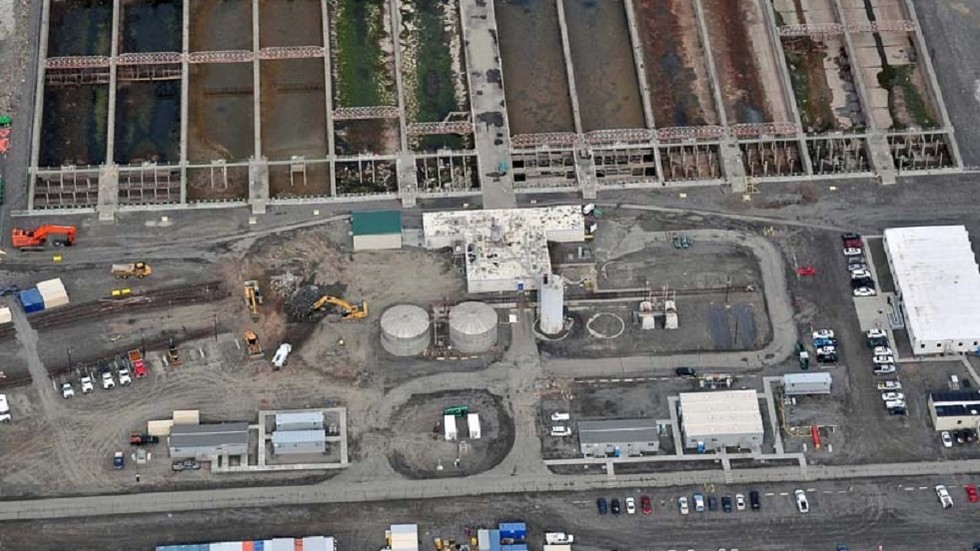highmystica
Jedi Master
I have not seen any of this on the t.v. news, not even a whisper - I heard about it yesterday on a progressive radio station but not the whole thing being that it was already going when I got into the car after wandering around the super-market. The radio said it was much worse than this link from the seattle PI says, but it is most serious regardless. The part that irritated me was that this happened of FRIDAY and yesterday was wednesday and they were still "working on a plan" to deal with the clean-up ... anyway here's the story from the PI
http://seattlepi.nwsource.com/local/6420AP_WST_Hanford_Leak.html
http://seattlepi.nwsource.com/local/6420AP_WST_Hanford_Leak.html
Clogged pump led to Hanford leak
By NICHOLAS K. GERANIOS
ASSOCIATED PRESS WRITER
SPOKANE, Wash. -- Trying to remove radioactive sludge that is thick as peanut butter clogged a pump and led to a spill at the Hanford nuclear reservation, officials said Tuesday.
Now workers are trying to determine how to clean the worst spill that Hanford's tank farm area has had in years.
"The release to the environment of this waste material is not acceptable," Delmar Noyes, of the U.S. Department of Energy at Hanford, told reporters during a conference call.
No workers were contaminated by the radioactivity and the spill was contained within a tiny area near the waste tanks, so it posed no threat to the public, Noyes said.
But the spill, which Noyes said was the largest in the tank farm in years, illustrates the difficulties of trying to safely dispose of nuclear waste that dates back to World War II and the Manhattan Project to build nuclear weapons. Hanford covers about 560 square miles in southcentral Washington near the Tri-Cities, and contains the nation's largest collection of nuclear waste from the production of weapons.
The spill was believed to have occurred early Friday, but was not detected until about 10 a.m., some seven hours later, Hanford officials said.
A Hanford watchdog group criticized the Energy Department for what it called a slow response to the leak.
"This latest leak of deadly waste illustrates the risks we face for decades to come," said Gerald Pollet, executive director of Heart of America Northwest.
"The failure to detect the leak for hours overnight, while deadly high-level nuclear wastes apparently spilled onto the ground, raises serious questions requiring state and federal investigations," Pollet said.
The waste from the bottom of the tank is so lethal "that a cup full of waste would kill everyone in a room in a short period of time," Pollet added.
Hanford officials contend they notified regulators in an appropriate fashion after the release was discovered.
The spill occurred as an underground tank called S-102 was being slowly drained of its nuclear waste, which since 2004 has been pumped into newer, double-walled tanks that are less likely to leak.
The waste is thick, with the consistency of chunky peanut butter, and is injected with water and stirred to make it pumpable, Hanford officials said.
Early Friday, the pump became clogged. Workers reversed the pump in an effort to clear it. That reversal sent some waste from the bottom of the tank up into the hose that was feeding water into the tank, and that's the waste that leaked onto the ground, Noyes said.
The leak was estimated at between 50 and 100 gallons, although officials are not yet sure how big it was, he said.
The spill area has been capped with a material to prevent the waste from becoming airborne. A plan to safely dispose of the spill is being developed, he said.
There were no workers in the tank farm when the spill occurred, Hanford officials said.
After the spill was detected, workers in protective gear went into the tank farm to determine the extent of the radiation release, they said.
Meanwhile, workers in surrounding areas were evacuated and the pumping operation was shut down, Noyes said. Also shut down was the pumping of another nuclear waste storage tank.
Both will remain closed until it is determined that work can safely proceed, he said.
Two pumps have already been ruined on tank S-102 since the removal work started in 2004, and the clogged pump has only been operated since July 25, Hanford officials said.
The spill area has been fenced and is being monitored for radioactive release, Noyes said.
The waste removal is being conducted by private contractor CH2M Hill, which has emptied seven of the old tanks so far.
The waste in S-102 dates to the World War II effort to make plutonium, said Richard Raymond, of CH2M Hill.
"It's some of the most difficult we've had to deal with," he said.
The S-102 tank can hold 758,000 gallons, although only about 40,000 gallons remains in the tank, officials said.


